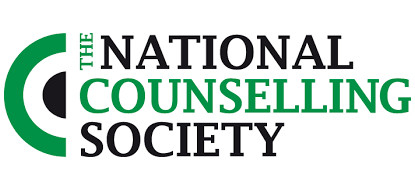KEY POINTS
- Societal beauty ideals are gendered and place pressure on everyone to strive for unattainable physiques.
- The gendered nature of societal beauty norms can place additional pressure on transgender and nonbinary individuals.
- New research has found higher levels of disordered eating behaviours in transgender populations.
- Treatment of disordered eating in trans and nonbinary communities must consider both societal pressures as well as gender dysphoria.
This post was co-authored by Kerri Mozessohn of Clean Serene Nutrition.
We are all familiar with the prototypical ‘ideal’ bodies portrayed in the media, as well as the critiques of such ideals.
Beauty norms are also quite gendered. We expect the masculine ideal to have large muscles, chiselled abs, defined jawlines, broad shoulders, and the ability to sport an attractive beard. Femininity, on the other hand, is marked by luscious lips, fulsome curves, slender necklines, and the near absence of body hair. Neither of these ideal sets of traits comes naturally to any individual and much research has been devoted to the mental and physical health consequences of striving to make one’s body twist, stretch, and shrink into the expectations communicated through the media. What then might happen when such ideals are strived for across the cisnormative demarcations of gender? Transgender and nonbinary individuals are exposed to the same media messages that outline ‘ideal’ body types but face the additional hurdle of their sex and gender not aligning.
What is the cost of these societal pressures? Although everyone is impacted by society's Adonis-like beauty ideals, recent research has identified much higher rates of disordered eating behaviours in transgender and nonbinary populations than among their cisgender counterparts. For example, while up to 50% of transgender participants in one study reported disordered eating behaviours, with 10.6% meeting the criteria for a diagnosable eating disorder, the lifetime prevalence of eating disorders in cisgender women is 5.7%; it's just 1.2% in cisgender men. For trans and nonbinary individuals, the distance between the body they were born with and the Photoshopped ideals presented in the media can be even greater, perhaps helping to explain the differential rates of eating disorders.
Restrictive eating behaviours have long been a known approach to coping with gender incongruence or dysphoria. Prior to having access to any form of gender-affirmative care, transgender and nonbinary individuals may attempt to move closer to their ideal gendered body by altering their eating to influence their physical features. Restricted eating can suppress the hormones responsible for the development of secondary sex characteristics. Restrictive or adapted eating behaviours can also be combined with over-exercising to achieve the physical characteristics associated with one's gender identity.
The patterns can look different between trans men and trans women. Transgender women may attempt to conform to feminine beauty ideals by focusing on reducing their facial and body hair while eating and exercising with the goal of a slender frame. Transgender men, on the other hand, may engage in restricted eating to inhibit the growth of their breasts and hips while also relying on muscle-gaining workouts and supplements to build a more masculine physique.
Societal norms that ascribe specific ideal body types to different genders place pressure on all individuals. For transgender and nonbinary individuals, these pressures can be further exacerbated. While not all trans and nonbinary individuals seek physical intervention to change their bodies, many do, and healthcare providers need to work with this population to achieve physical goals in a healthy and supported manner, ideally reducing any reliance on restricted eating or extreme exercise regimes.
New Research on Gender Affirmation and Eating Disorders
A recent study published by Nowaskie and colleagues in the International Journal of Eating Disorders reported high levels of eating disorder behaviours in a sample of trans men and women who varied in their access to gender-affirming hormone treatment and surgeries. Similar to research using cisgender populations, eating-disorder symptoms were higher among trans women than among trans men, perhaps underlying the continued additional societal pressures on women, including trans women, to adhere to specific physical ideals. The study also reported differences in eating disorder behaviours as a function of whether participants had accessed gender-affirming hormone treatment or surgeries. Eating-disorder symptoms were lower among trans individuals who received both surgery and hormones compared to those who had received neither or only hormones. Moreover, those who had both surgery and hormones were less likely to report shape and weight concerns, both of which are highly associated with disordered eating behaviours.
Yet, as with a great deal of research on eating disorders and body image, the literature does not always present consistent findings. In another recent study published in Eating Behaviors, researchers found no significant reduction in disordered eating behaviours for transgender and nonbinary individuals receiving gender-affirming medical interventions. It is important to note, however, that this study only assessed participants at a one-year follow-up, which may not have been enough time for the treatments to have impacted disordered eating behaviours. Clearly, more research is needed to assess the efficacy of gender-affirming medical and psychotherapeutic interventions for the treatment of disordered eating in transgender and nonbinary individuals.
Increasing Support for the Transgender and Nonbinary Community
In their paper, Nowaskie and colleagues noted that transgender individuals may arrive at disordered eating behaviours through both the traditional pathways of sociocultural pressures that influence everyone, regardless of gender identity, as well as through the unique experiences of gender dysphoria associated with trans and nonbinary gender identities. What remains missing from the literature is guidance on how best to provide treatment for eating disorders among those in the trans and nonbinary communities. Such treatment should consider the interplay between societal pressures as well as gender dysphoria. Disentangling the role of these two contributors in each individual case is likely an important step toward finding effective treatments and may help to explain why gender-affirming care (hormones and surgery) appears to reduce disorder eating symptomatology in some trans and nonbinary individuals but not others. Historically, both research and medical education have ignored transgender and nonbinary communities, and thus many current practitioners may be ill-equipped to meet the needs of this population.
It is also important to remember that not all gender-affirming care relies on the medical profession and that even public usage of someone’s pronouns can have a profound impact on their life. Beauty ideals might be inherently unattainable, but reaffirming a transgender or nonbinary person’s identity through the simple utterance of their gender-affirming name and pronouns is support that anyone can provide.











